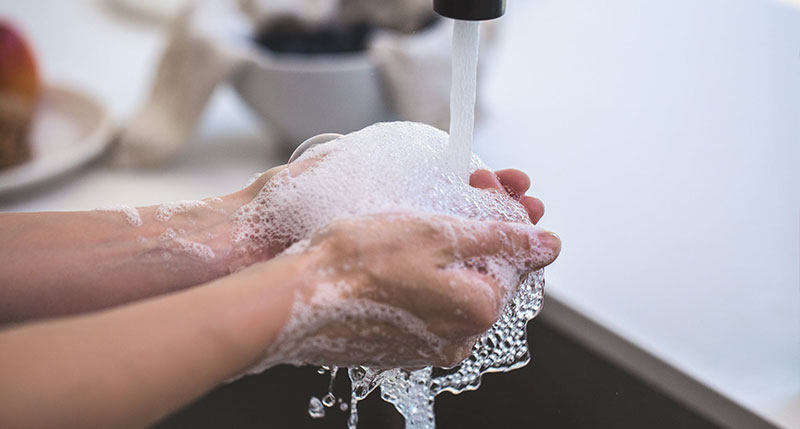Your parents likely taught you the value of washing your hands often and thoroughly—especially during cold and flu season to prevent you from contracting a virus when you touch your nose, mouth or eyes. And it turns out that Mom and Dad were right: Washing often to keep your hands clean is one of the most effective methods for avoiding the spread of germs that cause us to get sick.
But where should you start: Soap and water? Hand sanitizers? What kind of soap? Warm or cold water? Whichever way you choose to clean your hands this flu season – do so often and with attention to detail to keep your hands germ-free, which is a proven way to protect yourself from contracting illnesses this flu season.
Below are 6 steps to help you wash your hands thoroughly to live your best, germ-free life this winter:
- Use warm, room temperature or cold water. Sure warm water feels best, but studies don’t prove that using hot water is more effective than cold or room temperature water in ridding your hands of germs. (Yes, heat kills bacteria, but at such a high temperature that you’d scald your hands in the process.)
- Use running water. Don’t fill the sink and then dip your hands into it – that’s asking for a lot of recontamination of the germs you’re trying to banish. In an ideal world, wet your hands under running water, turn the water off (so you don’t waste water!), then get some soap on them and start working it into a healthy lather.
- Lather thoroughly. Rub the soap on your hands and create friction to lift germs, grease, dirt and microbes from your skin–and don’t forget to include the spaces between your fingers, beneath your nails and the backs of your hands. Lather vigorously and continue to do so for 20 seconds. Unsure how long 20 seconds is? If you sing or hum the “Happy Birthday” song twice, that should get you the right length of handwashing to maximize cleanliness and good health.
- Bar soap or liquid soap? You choose. The type of soap you’re washing with doesn’t have a big impact on the level of cleanliness you can achieve — as long as it lathers enough to trap the germs so you can rinse them away at the end. There isn’t scientific evidence that antibacterial soaps work any better for improving the health of consumers, so the FDA ruled in September 2016 that these antibacterial products should no longer be marketed to the general population. (This doesn’t include healthcare professionals.)
- Rinse beneath clean, running water. You want to wash away the dirt, germs and grease. Don’t dip your hands into a basin of standing water—which has a high risk of being contaminated from other users. Rinse your hands with clean, running water. Another fallacy is that you should leave the water running while drying your hands with a paper towel and then use the paper towel as a barrier from touching the faucet handle after your hands are dry. The US Centers for Disease Control states that there’s no data to show this practice improves your health.
- Dry hands thoroughly. Either with a clean towel (paper or cloth) or by air, be sure to dry your hands thoroughly after washing them. There’s a good reason: Germs are more easily transferred to (and from!) wet hands. Studies indicate that the two best ways to dry your freshly washed hands are either with air drying or a clean towel.
We hope these tips help you enjoy a flu-free winter season!

